The Pont du Gard, a Roman aqueduct built nearly 2,000 years ago, stands tall as an engineering marvel that still captivates visitors today. This 50-meter tall structure, comprised of three tiers of arches, was part of an expansive water delivery system that supplied the city of Nîmes from a distant source. Though constructed without mortar, the Pont du Gard’s precision and craftsmanship showcase the Romans’ remarkable building expertise. Exploring this ancient wonder offers a glimpse into the ingenuity and vision that defined the Roman Empire.
Key Points
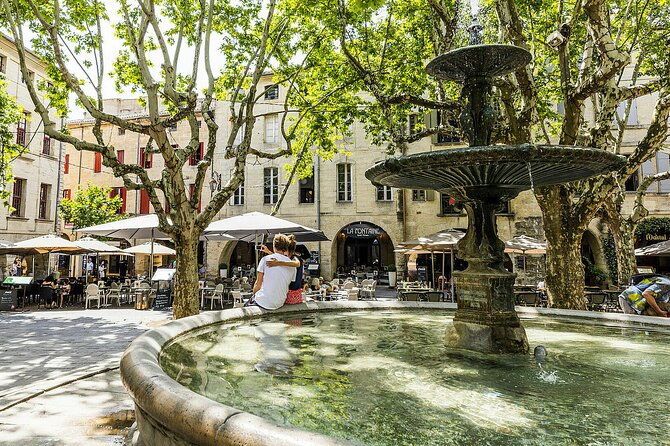
- Pont du Gard is an awe-inspiring ancient Roman aqueduct built in the 1st century AD as part of a larger system to deliver water to Nîmes.
- The aqueduct’s impressive engineering, featuring a three-tiered design standing 50 meters tall, showcases the Roman’s mastery of construction without mortar.
- The architectural grandeur of Pont du Gard, with its perfect symmetry and intricate stone carvings, represents the ingenuity and craftsmanship of Roman builders.
- This ancient water supply system stood for nearly 2,000 years, highlighting the enduring legacy and sophistication of Roman infrastructure.
- Visiting Pont du Gard today offers a remarkable opportunity to explore a well-preserved Roman aqueduct and gain insights into its rich cultural heritage.
The Ancient Roman Aqueduct
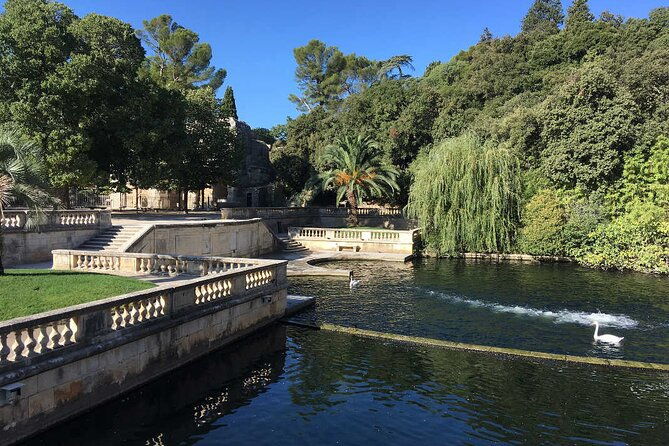
The Pont du Gard is an ancient Roman aqueduct that stands as a testament to the engineering prowess of its builders.
Constructed in the 1st century AD, this impressive structure was part of a larger aqueduct system that carried water over 50 kilometers to the Roman city of Nîmes.
Spanning the Gardon River, the Pont du Gard stands at an impressive 50 meters tall and features three tiers of arches, each meticulously engineered to support the weight of the water-bearing channel above.
Its sheer scale and technical sophistication continue to captivate visitors from around the world.
Looking for more options in Avignon? We've reviewed plenty of other experiences.
The Impressive Engineering Feat
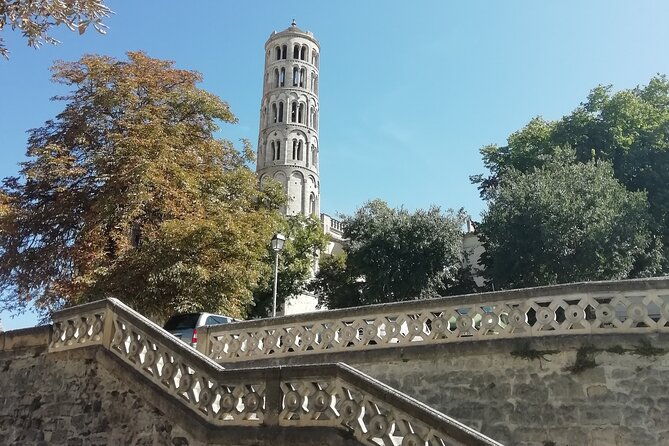
Constructing the Pont du Gard was an impressive engineering feat that has stood the test of time.
Standing at an impressive height of 50 meters, this three-tiered Roman aqueduct bridge was built without the use of mortar, relying solely on the precise cutting and fitting of massive stone blocks.
The scale and complexity of this structure are a testament to the engineering prowess of its ancient builders.
Spanning a gap of nearly 275 meters, the Pont du Gard carried water across a deep valley, providing a vital supply to the city of Nîmes.
This ancient marvel continues to captivate visitors today.
The Architectural Grandeur
Though the sheer scale of the Pont du Gard is undoubtedly impressive, it’s the architectural grandeur of this Roman aqueduct that truly captivates visitors.
The perfect symmetry of the three-tiered arches, the intricate stone carvings, and the seamless integration of function and form all contribute to its striking beauty.
Travelers are often in awe of the:
- Stunning silhouette against the sky
- Delicate balance of strength and grace
- Masterful use of local materials
- Timeless elegance that has endured for centuries
This architectural marvel stands as a testament to the ingenuity and craftsmanship of its Roman builders, leaving a lasting impression on all who witness its grandeur.
The Enduring Legacy
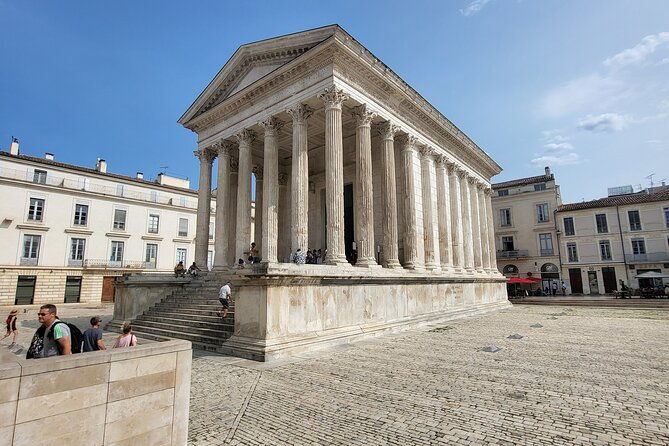
Beyond its architectural splendor, the Pont du Gard’s enduring legacy stems from its role as a vital component of the ancient Roman water supply system.
For nearly 2,000 years, this iconic aqueduct has stood as a testament to Roman engineering prowess, delivering water to the bustling city of Nîmes.
Today, the site attracts visitors from around the world who marvel at its remarkable preservation and the ingenious design that enabled it to withstand the test of time.
The Pont du Gard’s continued significance underscores the profound impact of Roman infrastructure and the lasting influence of their sophisticated building techniques.
Exploring the Pont Du Gard
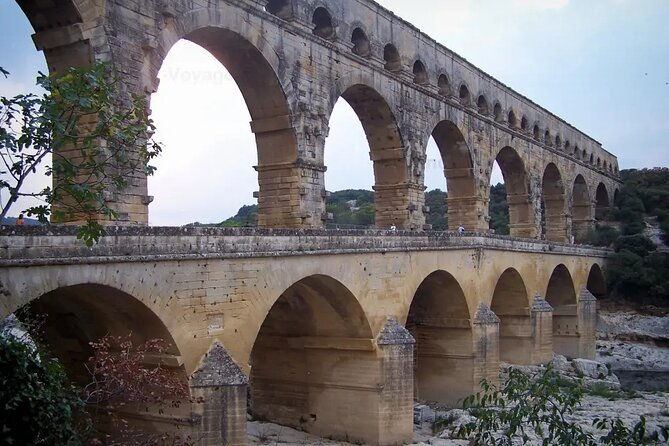
How does one begin to explore the captivating Pont du Gard? The massive Roman aqueduct, standing impressively at 50 meters tall, invites visitors to embark on a journey through history.
To make the most of this experience:
- Start at the visitor’s center to gain context and insights into the aqueduct’s construction and significance.
- Walk across the iconic three-tiered bridge, marveling at the engineering feats of ancient Roman builders.
- Hike the scenic trails that offer panoramic views of the structure and the surrounding natural landscape.
- Enjoy the serene atmosphere, allowing the grandeur of Pont du Gard to transport you back in time.
- Van Gogh & Carrières De Lumières Half-Day Tour From Avignon
- Half-Day Van Gogh Tour of Provence From Avignon
- Provence Highlights Full-Day Tour From Avignon
- Chateauneuf Du Pape Wine Tour
- Châteauneuf Du Pape Wine Day Tasting Tour Including Lunch From Avignon
- Provence Cru Wine Small-Group Half-Day Tour From Avignon
The Surrounding Provençal Landscape
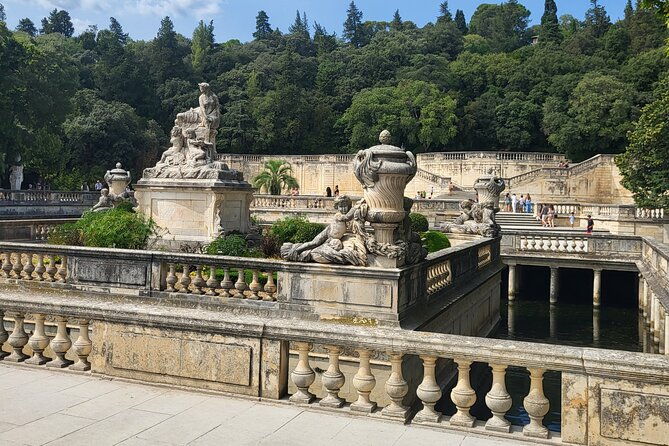
Stepping away from the imposing Pont du Gard, the surrounding Provençal landscape captivates visitors with its serene natural beauty. Rolling hills blanketed in vineyards and olive groves set the stage for charming medieval towns, each with its own unique character. Visitors can explore lavender fields in bloom, hike scenic trails, or simply bask in the region’s unhurried pace. The natural splendor is matched by the local culture, where traditions and cuisine have been passed down for generations. A closer look reveals the Provençal joie de vivre that permeates every corner of this picturesque setting.
| Provençal Landscape Features | Visitor Activities |
|---|---|
| Rolling hills | Explore lavender fields |
| Vineyards and olive groves | Hike scenic trails |
| Charming medieval towns | Bask in the unhurried pace |
| Scenic natural beauty | Immerse in local culture |
The Significance in History
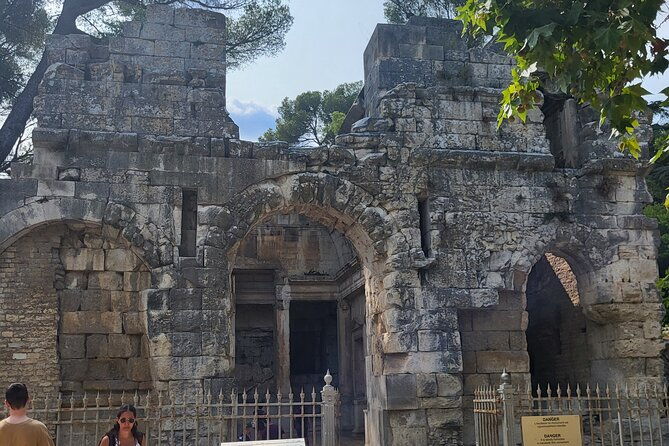
Though centuries have passed, the Pont du Gard continues to captivate visitors with its enduring historical significance.
Built by the Romans in the 1st century AD, this impressive aqueduct served as a vital water conduit, channeling fresh water over 50 kilometers to the ancient city of Nîmes.
Its grandeur and architectural mastery underscore the ingenuity of Roman engineering.
The Pont du Gard stands as a testament to:
- Roman technological prowess
- Innovative water management systems
- Monumental construction achievements
- Lasting cultural legacy
Today, this UNESCO World Heritage site remains a stunning reminder of the Roman Empire’s ambition and the timeless allure of human progress.
Visiting the Pont Du Gard Today

Today, visitors can enjoy the captivating history and grandeur of the Pont du Gard. This UNESCO World Heritage Site offers a remarkable opportunity to explore one of the best-preserved Roman aqueducts in the world.
Visitors can stroll along the ancient walkways, marvel at the impressive engineering, and gain insights into the site’s rich cultural heritage. With a maximum of 8 travelers per tour, the experience provides an intimate and personalized exploration of this iconic landmark.
Travelers can also enjoy a included lunch, making the visit a truly memorable and enriching experience.
Frequently Asked Questions
Is the Tour Wheelchair Accessible?
The tour is not wheelchair accessible, but it is stroller accessible and allows service animals. Infant seats are available, making it a suitable option for families visiting the Pont du Gard region.
Can I Bring My Service Animal on the Tour?
Yes, service animals are allowed on the tour. The tour overview specifically states that "service animals allowed", so travelers can bring their service animals along during the tour experience.
When Do I Need to Pay for the Tour?
With the "Reserve now and pay later" option, you don’t need to pay for the tour until closer to the experience. This provides flexibility in planning your trip without upfront costs.
Can I Cancel My Booking for a Full Refund?
According to the cancellation policy, you can cancel your booking for a full refund up to 24 hours before the experience starts. This provides flexibility in case your plans change.
How Many Travelers Are Allowed on the Tour?
The tour has a maximum of 8 travelers per group, allowing for a more personalized experience. The small group size ensures travelers receive attentive service and can easily interact with the knowledgeable tour guide.
The Sum Up
The Pont du Gard stands as a remarkable testament to Roman engineering prowess. Its architectural grandeur and enduring legacy continue to captivate visitors, who can explore the aqueduct and its stunning Provençal surroundings. This ancient structure remains a symbol of Roman ingenuity, showcasing the exceptional craftsmanship and technical achievements that defined one of history’s most influential civilizations.
More 1-Day Tours in Avignon
More Half-Day in Avignon
- Custom Half-Day Private Tour through Provence
- Luberon Villages Small Group Half-Day Trip from Avignon
- From Avignon: Half-Day Camargue and Saintes-Maries-de-la-Mer
- From Avignon: Half-Day Van Gogh & Carrières De Lumières Tour
- From Avignon: Châteauneuf Du Pape Half-Day Wine Tour
- From Avignon: Villages in Luberon Half-Day Tour
More Tour Reviews in Avignon
- Wines from Châteauneuf-du-Pape and surrounding areas in 1/2 day
- Arles and Camargue Full-Day Tour including Aigues Mortes
- Roman Sites and Historical Places Day Trip from Avignon
- Avignon, St Rémy, Les Baux de Provence & Pont du Gard
- Highlights of Provence : Chateauneuf du Pape & Luberon
- Afternoon Wine Tour to Chateauneuf du Pape from Avignon
Still browsing? Here are more Avignon experiences we've covered recently
- The 3 Best Wine Tours In Avignon
- The 8 Best Tours In Avignon
- Top 4 Full-Day Tours In Avignon
- The 14 Top Tours & Experiences In Avignon: Which Is Best?
- Wines from Châteauneuf-du-Pape and surrounding areas in 1/2 day
- Arles and Camargue Full-Day Tour including Aigues Mortes
- Roman Sites and Historical Places Day Trip from Avignon
- Avignon, St Rémy, Les Baux de Provence & Pont du Gard
- Highlights of Provence : Chateauneuf du Pape & Luberon
- Afternoon Wine Tour to Chateauneuf du Pape from Avignon
- Camargue Small-Group Day Trip from Avignon
- Full day E-Bike rental in the Luberon
